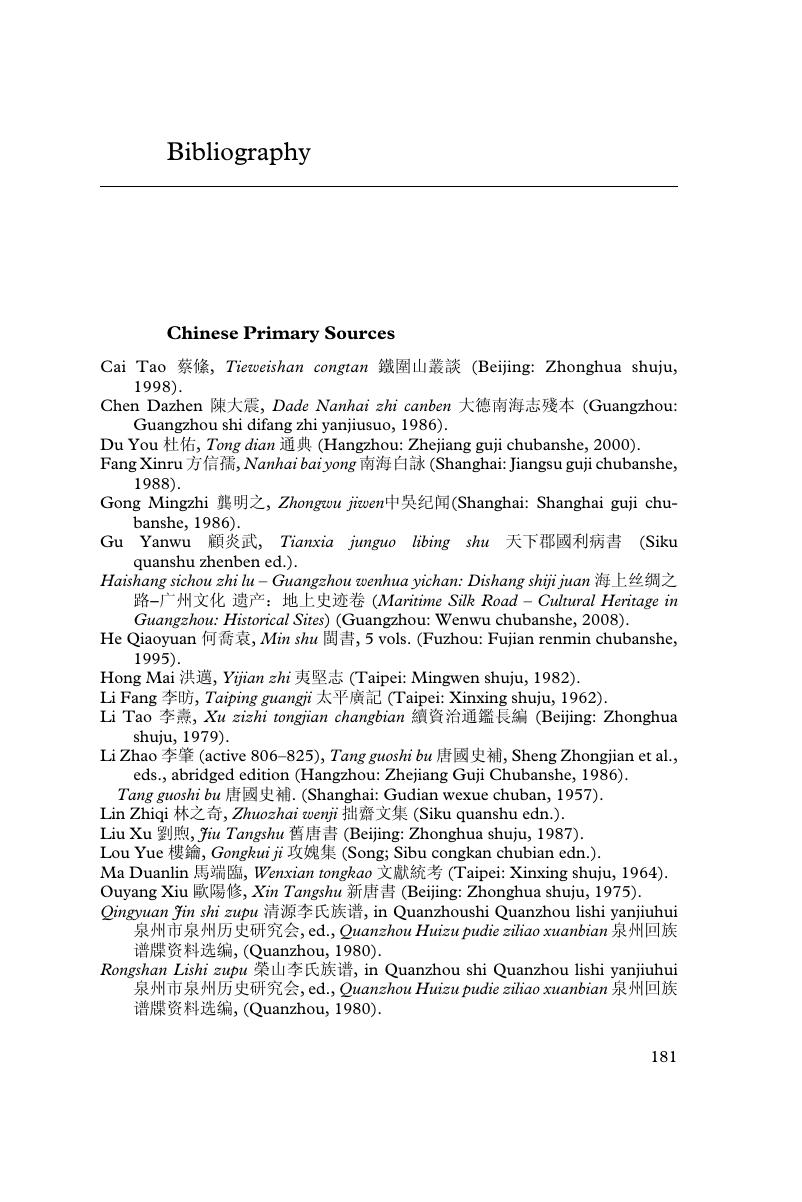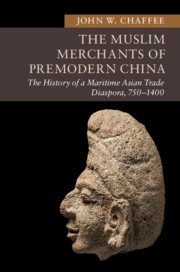Book contents
- The Muslim Merchants of Premodern China
- New Approaches to Asian History
- The Muslim Merchants of Premodern China
- Copyright page
- Contents
- Figures
- Maps
- Acknowledgments
- Introduction
- 1 Merchants of an Imperial Trade
- 2 The Reorientation of Trade
- 3 The Maturation of Merchant Communities
- 4 The Mongols and Merchant Power
- 5 Endings and Continuities
- Bibliography
- Index
- References
Bibliography
Published online by Cambridge University Press: 13 August 2018
- The Muslim Merchants of Premodern China
- New Approaches to Asian History
- The Muslim Merchants of Premodern China
- Copyright page
- Contents
- Figures
- Maps
- Acknowledgments
- Introduction
- 1 Merchants of an Imperial Trade
- 2 The Reorientation of Trade
- 3 The Maturation of Merchant Communities
- 4 The Mongols and Merchant Power
- 5 Endings and Continuities
- Bibliography
- Index
- References
Summary

- Type
- Chapter
- Information
- The Muslim Merchants of Premodern ChinaThe History of a Maritime Asian Trade Diaspora, 750–1400, pp. 181 - 196Publisher: Cambridge University PressPrint publication year: 2018



